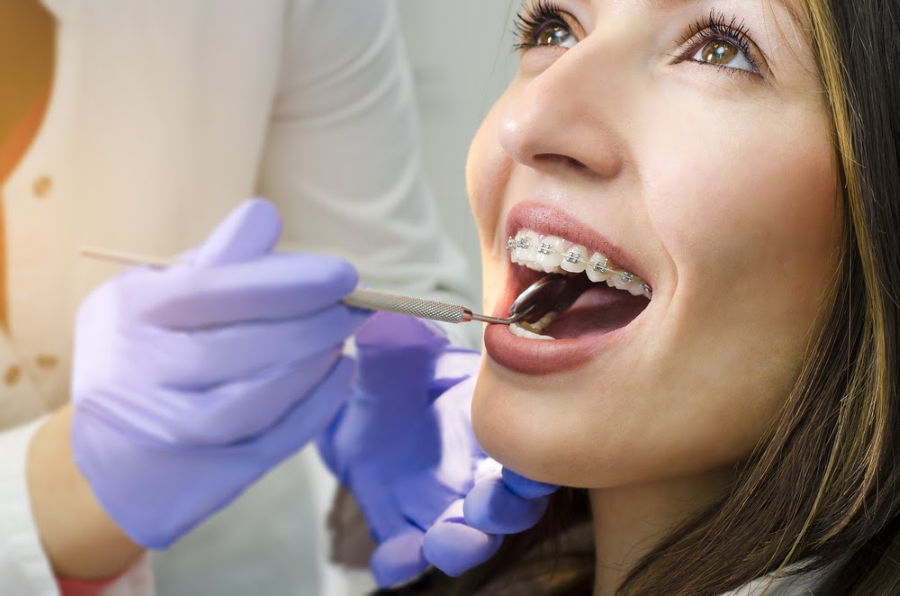The Best Guide To All Star Family Orthodontics
Our All Star Family Orthodontics PDFs
Table of ContentsExcitement About All Star Family OrthodonticsThe Definitive Guide for All Star Family OrthodonticsTop Guidelines Of All Star Family OrthodonticsThe Definitive Guide to All Star Family OrthodonticsThe Basic Principles Of All Star Family Orthodontics

At Advanced Orthodontics, we give people with a all natural therapy experience. Furthermore, we provide adjustable treatment timetables, adaptable payment alternatives and an enjoyable, enjoyable experience - orthodontics. Phone call ( 480) 357-4900 today for more information and timetable a consultation.
An orthodontist is a dentist trained to diagnose, prevent, and deal with teeth and jaw abnormalities. Orthodontists function with individuals of all ages, from children to grownups.
Malocclusion, or misaligned teeth, can cause oral issues, including dental caries, periodontal illness, and tough or uncomfortable chewing. Not every person is born with straight teeth. If you have a poor bite or big areas between your teeth, you may intend to seek advice from a dentist specializing in orthodontic care.
3 Simple Techniques For All Star Family Orthodontics
(Picture Debt: DigitalVision/Getty Images) Orthodontists make use of dealt with and removable dental tools, like braces, retainers, and bands, to transform the setting of teeth in your mouth. Orthodontic therapy is for oral irregularities, including: Crooked teethBite problems, like an overbite or an underbiteCrowded teeth or teeth that are too much apartJaw misalignmentThe objective of orthodontic therapy is to enhance your bite.
While you may think of orthodontists as primarily for youngsters or teenagers that need braces, they can deal with dental troubles at any age. Orthodontists participate in college, oral college, and orthodontic college.
, yet not all dental experts are orthodontists. They concentrate on 2 locations: Just how to properly and securely relocate teeth Exactly how to correctly direct growth in the teeth, jaw, and faceOnce an orthodontist has completed training, they have the alternative to become board certified.
What Does All Star Family Orthodontics Mean?
Imbalance, or malocclusion, is the most typical reason individuals see an orthodontist. It is genetic and is the outcome of size differences in between the top and lower jaw or in between the jaw and teeth. Malocclusion brings about tooth congestion, an irregular jaw, or uneven bite patterns. Malocclusion is normally treated with: Your orthodontist attaches steel, ceramic, or plastic square bonds to your teeth.
If you have just minor malocclusion, you may have the ability to make use of clear braces, called aligners, as opposed to conventional dental braces. Some individuals require a headgear to help move teeth right into line with stress from outside the mouth. After braces or aligners, you'll need to put on a retainer. A retainer is a personalized tool that maintains your teeth in position.

You may require to see an orthodontist if you have: Crowding or otherwise adequate space for all of your teethOverbite, when your upper teeth come your base teethUnderbite, when your bottom teeth are also much forwardSpacing or problems with gapsCrossbite, which is when your upper teeth fit behind your base teeth when your mouth is closedOpen bite or an upright gap in between your front bottom and top teethMisplaced midline, when the facility of your bottom and top teeth do not align Dealing with an oral malocclusion can: Make attacking, eating, and talking easierImprove the proportion of our face and your total appearanceEase discomfort from temporomandibular joint disordersDifferent your teeth and make them much easier to clean, assisting avoid tooth degeneration or dental caries It's frequently a dental practitioner that first notices misaligned teeth during a routine test.
All Star Family Orthodontics for Dummies
During your first orthodontic examination, you'll likely have: An oral examPhotos taken of your face and smileDental X-raysPanoramic (360 level) X-rays of your face and headImpressions to produce molds of your teethThese tests will assist your orthodontist understand how to proceed with your treatment. An orthodontist is a dental practitioner that's had training to treat your teeth and jaw.
Orthodontists may execute surgical treatment, exams,X-rays, - bracesand more to assist you attain a more comfy, healthier smile. An orthodontist is focused on your bite, so something like a broken tooth would be dealt with by a dentist. Orthodontists are dental practitioners yet not all dental professionals are orthodontists. Orthodontists are concentrated on your bite, or the way your teeth meshed, and the straightness of your teeth.

This preliminary assessment entails an aesthetic examination of your teeth and attack, X-rays, and possibly even 3D scans. By meticulously examining these aspects, the orthodontist can pinpoint any type of imbalances, crowding, spacing problems, or jaw discrepancies. As soon as a clear image is established, the orthodontist will discuss tailored treatment alternatives. This conversation will cover the kind of braces or aligners advised (conventional metal dental braces, clear aligners like Invisalign, etc), the projected treatment duration, and any kind of potential challenges or negative effects.
An Unbiased View of All Star Family Orthodontics
, orthodontists have a varied toolkit at their disposal. These tried-and-true braces use a system of brackets adhered to the teeth and attached by cables.
Clear aligners, like Invisalign, read here are a preferred choice for clients looking for a more discreet therapy choice. These detachable trays are customized to considerably move the teeth's setting. Headgear may be used along with braces or aligners to use added targeted pressures, particularly for dealing with jaw discrepancies. In situations of narrow jaws, palatal expanders can be made use of to produce space for proper tooth alignment.